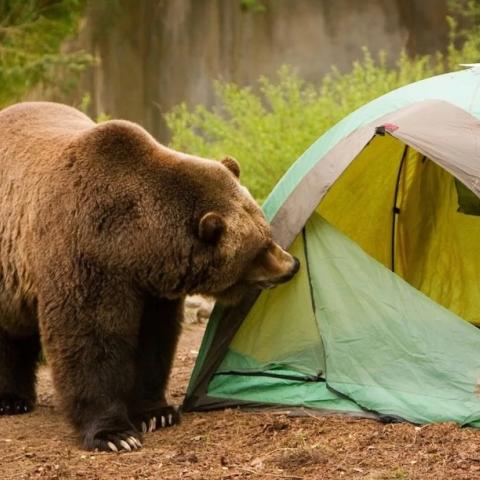Efforts to remove nonnative mountain goats from Grand Teton National Park will resume this fall, and the park is seeking volunteers to help with the culling.
Last winter aerial marksmen brought in by the park killed three dozen mountain goats before Interior Secretary David Bernhardt, responding to concerns from Wyoming Gov. Mark Gordon, ordered a halt to the work. The problem from the governor's viewpoint was that the park wasn't using any ground-based volunteers in the culling.
Now the park is seeking applications for qualified volunteers to help cull the nonnative mountain goats -- there are about 100 estimated in the park -- as part of Grand Teton's management plan aimed to conserve a native and vulnerable population of Rocky Mountain bighorn sheep in the Teton Range.
The use of qualified volunteers is a tool identified in the National Park Service's 2019 Mountain Goat Management Plan based on requests from Wyoming Game and Fish Department and in line with guidance in the 2019 John D. Dingell, Jr. Conservation, Management, and Recreation Act.
There is widespread interest among local, state, and national stakeholders in conserving the Teton Range bighorn sheep herd. The National Park Service is working on this project in cooperation with federal and state partners, including the Wyoming Game and Fish Department.
The Teton Range is home to a small herd of native bighorn sheep currently estimated at approximately 100 animals. As one of the smaller and most isolated herds in Wyoming that has never been extirpated or augmented, it is of high conservation value to the park, adjacent land and wildlife managers, and visitors.
The National Park Service has a responsibility to protect native species and reduce the potential for local extinction of a native species within the park.
Mountain goats are not native to the park. They were introduced into the Snake River Range in Idaho decades ago and over the years their population expanded and reached the Teton Range. Mountain goats can carry bacterial diseases that are lethal to bighorn sheep. The Teton Range bighorn sheep population has been relatively isolated and are therefore likely 'naïve' to these diseases.
The growth rate of the nonnative mountain goat population suggests that complete removal in the future may become unattainable if immediate action is not taken, park staff said in a release.
The qualified volunteer program will take place September 14-November 13, weather permitting. Those interested must apply as a team with a minimum of two individuals and maximum of six individuals.
To safely and successfully participate in this program, volunteers must have a high level of physical fitness as they may need to hike up to 20 miles per day at altitude in extremely rough mountainous terrain under a variety of weather conditions. All volunteers will receive training in bear spray deployment, backcountry tracking, radio protocols, species identification, and potentially, disease sample collection.
Applicants must be United States citizens and at least 18 years of age. Volunteers may not have active warrants, past wildlife violations, or violations associated with Grand Teton National Park, and must pass a mandatory firearm proficiency evaluation.
Teams may take as many non-native mountain goats as is reasonable for their given situation and reasonably attempt to harvest the edible portions from the animals they take.
Qualified volunteers interested in participating in the program may learn more and apply online at https://www.nps.gov/grte/getinvolved/mountain-goat-management-volunteer.htm
The park will stop accepting applications once 240 applications have been received. Successful applicants will be randomly selected for each operational period.
There are key differences between a culling program in a national park and traditional recreational hunting.
- Culling in a national park is done exclusively for conservation and stewardship purposes, while hunting is primarily for recreation or procuring food.
- Culling in a national park is conducted under controlled circumstances with the supervision of National Park Service personnel, while hunting is performed at the hunter's discretion, subject to applicable licensing and laws.
- Volunteers may not keep a trophy when participating in a culling program in a national park. The meat may be donated or distributed to Indian Tribes, qualified volunteers, food banks, and other organizations that work to address hunger, in accordance with applicable health guidelines.
- Culling in a national park does not generate revenue and does not include fair chase.




 Support Essential Coverage of Essential Places
Support Essential Coverage of Essential Places






